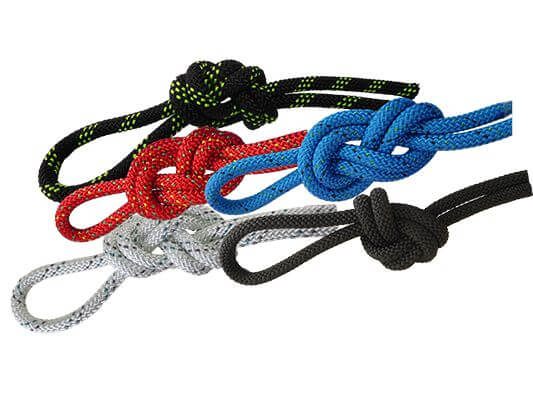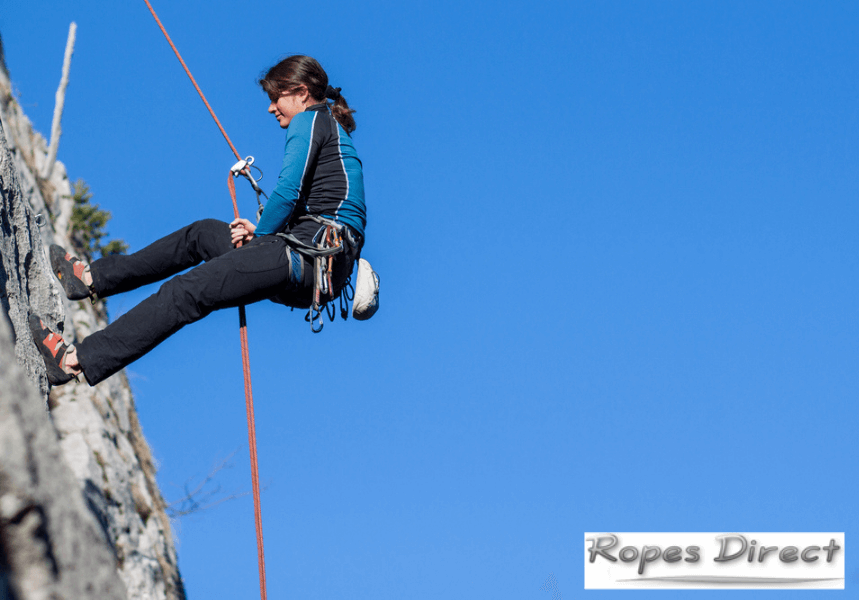When shopping for static ropes, safety is the No.1 priority.
Here at RopesDirect, all of our static ropes are Low Stretch Kernmantle (LSK). They are manufactured in line with BS EN1891 standards and have been classified as ‘Type A’.
So to help inform your purchase, and ensure you can make buying decisions based on facts, here we outline what it takes to achieve this classification and explore the main characteristics of the static ropes we currently stock.
Type A classification of static ropes
| Technical parameters | Type A Requirement |
| Rope diameter | 8.5-16mm |
| Knotability coefficient | Max. 1.2 |
| Sheath slippage | Max. 40mm |
| Elongation | Max. 5% |
| Shrinkage | Undefined |
| Impact force | Max.6kN |
| No. of falls with a fall factor of 1 | Min. 5 |
| Strength without knots | 22kN |
| Strength with knots | Min. 15kN |
Elongation
All ropes, including static ropes, will stretch under the right conditions. Even a steel cable will stretch.
Unlike dynamic ropes, which can be used as climbing safety lines, static ropes are lower-stretch, and are therefore used for hauling gear, descending and rope access.
The level of stretchiness demonstrated by a rope is known as ‘elongation’. According to EN1891 standards, the elongation of a static rope is measured by applying a test load of 150kg. For it to be classified as Type A, it cannot have an elongation rating greater than 5%.
Both our 10.5mm and 11mm static ropes easily fall into this bracket, with an elongation rating of 3.1% and 3.2%, respectively.
Diameter
In line with certified standards, a static rope is allowed to have a minimum diameter of 8.5mm and a maximum of 16mm. However, most climbing gear is designed to be used with 10-11mm ropes, such as those available in our online store. Depending on how you plan to use the rope, it’s worth keeping this in mind when making your purchase.

Static strength
The static strength will vary depending on the material the rope is made from and its diameter. To classify as Type A, EN1891 standards state that a static rope must have a minimum strength of 22kN.
Once again, the static ropes available in our store certainly meet this criterion. Those measuring 10.5mm in diameter demonstrate a static strength of 29.32kN, whilst those measuring 11mm in diameter have a static strength of 31.87kN.
Material
According to EN1891, static ropes must be manufactured from a material with a melting point higher than 195˚C – thereby ruling out polyethylene and polypropylene.
Here at RopesDirect, both our 10.5mm and 11mm static ropes benefit from a ‘kernmantle’ construction. The interior core (known as the kern) is made from polyamide/nylon, and the outer sheath (the mantle) is made from polyester. All of which are materials that can withstand temperatures far exceeding the 195˚C threshold.
Dynamic performance
Kernmantle ropes (BS EN 1891) must also be tested in terms of their ‘dynamic performance’. To qualify as Type A, a static rope must be able to withstand at least 5 falls, when tested with a load of 100kg.
However, our manufacturers have advised that their static ropes should be replaced after one fall. This is, therefore, a judgement for the user; RopesDirect is unable to advise whether a static rope should be used after it has been subjected to a shock.
Invest in a certified LSK rope

All of our static ropes are made to the highest quality. They comply with all of the strict EN1891 standards outlined above. And when you shop with us, you can be confident that you’re purchasing a safe product that has been fully CE certified.
So why not browse the range?
We currently stock both our 10.5mm and 11mm static ropes on 100m and 200m reels, or you can buy them by the metre to suit your specific requirements. Either way, they’re affordably priced – available for just £2.10 a metre. And we have a selection of colours for you to choose from.

